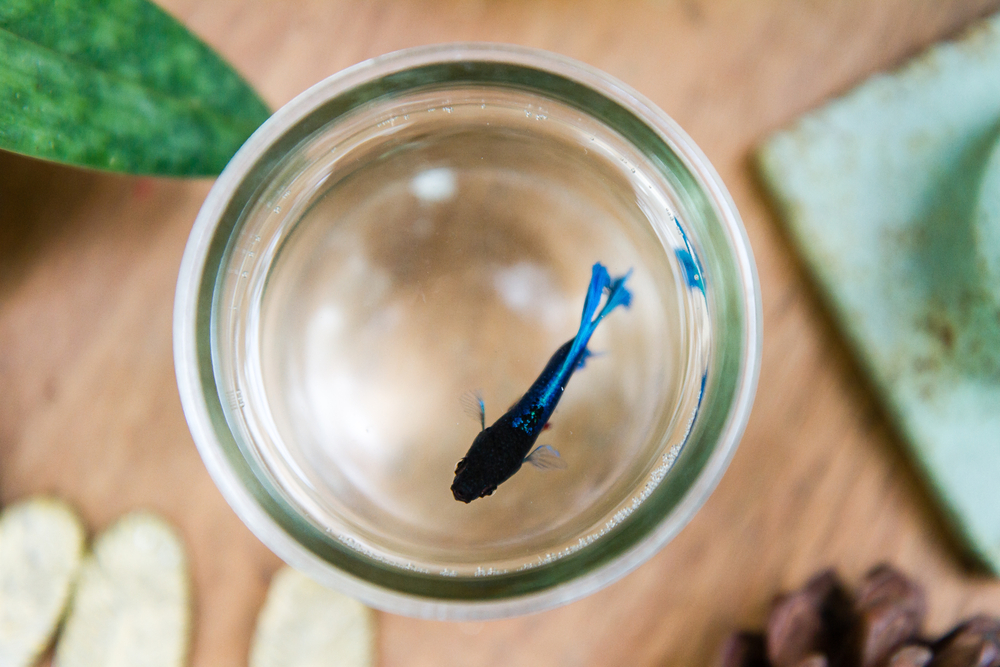The colourful Siamese Fighting Fish (Pla-gad) or Betta is indigenous to Southeast Asia, found naturally in the region’s rice paddies and flood plains. It has long been a popular first pet for many children; here’s why:
- They are hearty. Fighting fish are highly adaptable, with the unique ability to breathe oxygen directly from the air as well as take in oxygen from its gills. As a result, they can survive for short periods of time out of water, inhaling the air around them. They can even thrive in stagnant, oxygen-deficient water. The life expectancy of the fish is about 2 to 4 years.
- You only need one. The males are generally purchased as pets as they are larger, with brighter colours and more ornate fins. They are highly territorial and will fight with one another (hence the name!). On the whole, they prefer to be alone.
- They are beautiful. They swim gracefully and when agitated, the males will flare their gills and spread their fins. Let them see their own reflection in a mirror for this effect (but do this sparingly!).
- They are easy to find. Simply visit any fish shop or Chatuchak market (the section opposite the Children’s Discovery Museum), and you’ll find a selection of fighting fish in a range of prices.
- They don’t take up a lot of space. At Chatuchak, you’ll see the fish being displayed in glass bottles, which you can also do. However, your fish will be happier with a bit more space such as a wider bowl or small tank, some rocks where they can hide, and aquatic plants to produce oxygen.
- Feeding is easy – use commercial betta food and/or live brine shrimp (both available at Chatuchak).
- Care is manageable and can be done by kids. Fighting fish somehow keep their tanks or bowls pretty clean, compared to other fish like goldfish. You’ll have to clean the tank each week or so, depending on the size of the tank. When you do, take out a third of the water and replace it with warm fresh water (tap water that has sat for at least 24 hours to ensure that the chlorine content has dissipated). This will allow the fish to adjust to the temperature and pH of clean water, while not upsetting the biological balance of the environment. Also, use a small baster to siphon debris from the bottom of the tank, preventing the build-up of excessive ammonia and bacteria.
- Fish can develop fin rot, which is a bacterial ailment that is often caused by a dirty tank and characterized by tattered looking fins; the most effective things to do for fin rot at a mild stage are provide clean water with a bit of aquarium salt (which can be found at pet shops).
- They can be kept indoors or outdoors. Fighting fish do fine in a range of temperatures, from 24˚C (75˚F) to 30˚C (86˚F). Just be wary of extreme temperatures and keep them away from direct sunlight and air conditioners.
- They have personality. Their temperaments vary and you may get a shy, moody, aggressive or playful fish!
Register your email address here and we’ll notify you when a new article gets uploaded.















